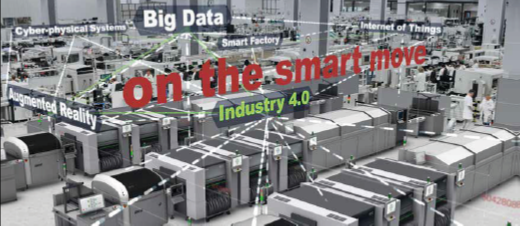On the Smart Move to Industry 4.0
The expanding use of machines and the rise in automation have reduced high-volume production costs rapidly and delivered huge leaps in efficiency in recent decades. This trend continues, while refinements like enhanced specialization and outsourcing, lean manufacturing, process and value chain orientation, and the use of IT-supported communication have further enhanced its positive impact on cost, quality, product diversity, and cycle times.
But today’s global markets demand even more. Products must be offered in more and increasingly customized variants while product life cycles are getting shorter all the time.
This leads to dramatically shrinking lot sizes and ever more frequent product changeovers. On top of this, globalized markets are extremely volatile. Trendy products must be available in huge quantities immediately after they have been announced (and sometimes long before), while other products disappear shortly after their introduction.
Manufacturers regularly outsource their production and are quick to shift it to other parts of the world if other service providers can do the job better or cheaper. Regional political and economic crises affect markets and demand all over the world. As a result, production facilities must be flexible, i.e. be able to respond quickly to product changes and scale their capacities up or down in line with demand. For electronics factories, this means that classic production concepts, rigid line concepts and the inflexible planning and control hierarchies from the age of mass production are no longer capable of mastering these challenges.
The market is moving towards new concepts like Industry 4.0.

The globalized economy places new demands on industrial manufacturing. Industry 4.0 can fulfill them. At the same time, new technologies open the door to new process improvement opportunities: modern software, wireless communication, broadband networks, standardized protocols, social media, 3D visualization, mobile devices, the Internet of Things, the explosion in storage and processor capacities, virtualization, in-memory computing, big data – all of these things and combinations thereof make possible new developments that radically change the way we work and live. The major components of a smart SMT factory will be: fully networked and highly automated production, real-time monitoring, self-controlling machines and processes, and totally new concepts in human-machine interaction. In all of these areas, the ASM engineers are already hard at work on implementing networked, highly agile and smart SMT production solutions in various customer projects.
The structure of this brochure reflects this. The first section uses the smart SMT factory pyramid to identify the technological components of the factory of the future. In the second section we identify the technology drivers that define the contents of the concrete innovation programs and development projects of the SMT Solutions Segment of ASM. The the third section we present concrete solutions we are offering today or will offer in the near future, or for which we are currently building the foundation.
We also explain how your SMT production processes can benefit from them.



